On 16 January 2012, 300 researchers, policy makers, industry specialists, and NGO representatives from 36 nations gathered in Mexico City to launch the MAIZE and WHEAT CGIAR Research Program (CRP) meetings. In opening the proceedings, Pedro Brajcich Gallegos, representing INIFAP and SAGARPA, on behalf of the Government of Mexico, highlighted the importance of these two CRPs in light of the increasing occurrences of extreme weather due to climate change. Mexico is among the affected countries and Brajcich Gallegos pledged the support of the Mexican Government in achieving the goals set out by these two initiatives.
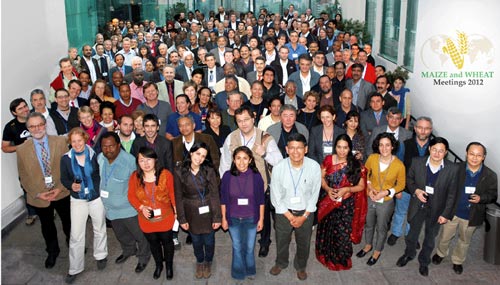
Led by CIMMYT and ICARDA, the WHEAT CRP is expected to deliver enough wheat for an additional 56 million consumers by 2020, and an additional 397 million by 2030. The MAIZE CRP, lead by CIMMYT and IITA, is focused on delivering enough maize to feed an additional 135 million consumers in 2020, and an additional 600 million by 2030. These goals are particularly pertinent given the recent predictions of a UN report, estimating a world population of 10 billion by 2080.
CIMMYT’s Director General, Thomas Lumpkin, delivered a joint presentation with Molly Jahn, Professor, Department of Agronomy and Genetics for the Center for Sustainability and the Global Environment at the University of Wisconsin-Madison. “This meeting is historic and significant,” declared Jahn, “These two CRPs are a significant development for agricultural research, and people all over the world are watching for the results,” she added.
Representing the Bill & Melinda Gates Foundation, Director of Agricultural Development Programs David Bergvinson delivered a presentation focusing on the increasing need for holistic and systems-based approaches to addressing future food security demands. “Never have so many been so dependent on so few for food,” he said, and went on to stress the need for investment by governments and aid agencies: “We’re all here to lift smallholder farmers out of poverty, and agriculture is the engine with which to do that.”
Marianne Bänziger, CIMMYT Deputy Director General for Research and Partnerships, urged researchers to focus on delivering results to the world’s poorest farmers: “Productivity is not just about yields, but what is actually happening in farmer’s fields,” she said. Bänziger also warned that the food riots of 2008 and 2010 would be repeated, and that it is the responsibility of the international scientific community and policy makers to stem food price increases and improve livelihoods for agricultural producers.
Over the subsequent four days, participants attended presentations and formed discussions and focus groups to identify research priorities and coordinate future work among themselves and with farmers. As expressed by seed producer María E. Rivas-Dávila: “I feel I have a role in the CRPs, because they are thinking at all levels, from researchers to farmers, so I am in the middle.”
Coming from such a wide range of institutions, participants had many different experiences to share. “I intended to bring my experience, but also to gather information, because we have not reached the end of the road,” said Argentinean Agronomist-Producer, Roberto Peiretti. “There is always a lot of opportunity to learn more and more, and I knew that this meeting was going to have such a broad base of worldwide participation, so I was extremely glad to be invited,” he added.
The closing session on Friday 20 January was chaired by Salvador Fernández Rivera, coordinator for research, innovation and partnerships, and agricultural research of Mexico’s National Institute of Forestry, Agriculture, and Livestock Research (INIFAP). Representatives from geographically- and organizationally- diverse partner entities shared impressions and suggestions. Maize breeder James Gethi, of the Kenya Agricultural Research Institute (KARI), said the type of planning that had been done was critical for better impact and for synergies: “We were all here to improve impact in the welfare of smallholder farmers. How can we achieve this with all the bright minds in the room?” He enjoined national organizations, international centers, seed companies, and other actors to share information and knowledge.
Marilia Nutti, biofortification coordinator in Brazil’s Agricultural Research Corporation, EMBRAPA, said teamwork is the only way. “We need to work with the private sector to speed progress…and with the international community, for sustainable technology.”
Kingstone Mashingaidze, maize scientist with South Africa’s Agricultural Research Council (ARC), warned that partners should not be left behind in the mastery and use of molecular tools. “I don’t think CIMMYT can afford to run alone with molecular breeding tools,” he said. “For national programs, the challenge is if you want to continue to be relevant, then you’d better change the way you do business.”
After the exciting and hectic week of meetings, one shared sentiment was that MAIZE and WHEAT represent precisely that: a chance for everyone to leave behind business as usual and take bold and intelligent action to energize agriculture and meet the global challenges of food security.
A special recognition to Laura Ruíz and the logistics team for their long hours and sleepless nights to make the event the success it was.
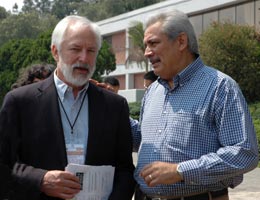 Skyrocketing food prices recently brought Latin American agriculture ministers from 14 countries and development experts to CIMMYT to seek a way forward for a region characterized by serious rural poverty.
Skyrocketing food prices recently brought Latin American agriculture ministers from 14 countries and development experts to CIMMYT to seek a way forward for a region characterized by serious rural poverty.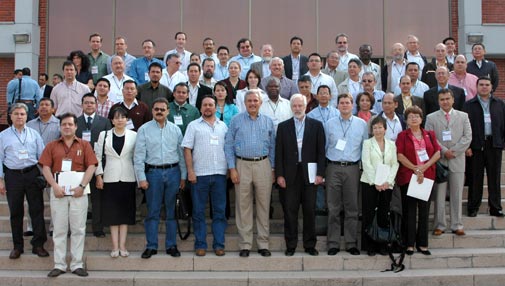
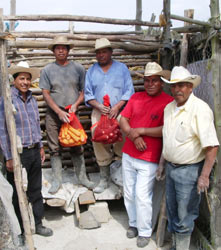 The State of Mexico borders the country’s capital, Mexico City—a potential market of nearly 20 million inhabitants—but farmers there have struggled to make a profit growing maize. CIMMYT is working to help them, as part of a new partnership between the US Department of Agriculture (USDA) and the Mexican Agriculture Secretariat (SAGARPA).
The State of Mexico borders the country’s capital, Mexico City—a potential market of nearly 20 million inhabitants—but farmers there have struggled to make a profit growing maize. CIMMYT is working to help them, as part of a new partnership between the US Department of Agriculture (USDA) and the Mexican Agriculture Secretariat (SAGARPA). Years of low prices, until recently, for maize grain have discouraged farmers from investing in advanced practices or new varieties. “The state of Mexico accounts for ten percent of national maize production, but improved varieties occupy little more than a tenth of its maize area,” says CIMMYT maize researcher Silverio García. “And nearly all the maize they produce is white grained and ideal for local foods, but fails to meet market standards for large-scale, commercial tortilla production, feed or industrial uses.”
Years of low prices, until recently, for maize grain have discouraged farmers from investing in advanced practices or new varieties. “The state of Mexico accounts for ten percent of national maize production, but improved varieties occupy little more than a tenth of its maize area,” says CIMMYT maize researcher Silverio García. “And nearly all the maize they produce is white grained and ideal for local foods, but fails to meet market standards for large-scale, commercial tortilla production, feed or industrial uses.”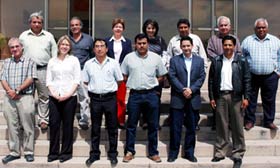 Atlin and Garcia recently led a workshop of 11 maize scientists from the Mexican National Institute of Forestry, Agriculture, and Livestock Research (INIFAP), Mexico State’s Institute of Agriculture, Livestock, Water, and Forestry Research and Training (ICAMEX), the Colegio de Postgraduados (a graduate-level agricultural research and learning institution), and CIMMYT to plan project activities. Participants contributed detailed information on varieties grown in the state, agreed on common software for managing and analyzing data from trials, and discussed ways to foster farmer participation.
Atlin and Garcia recently led a workshop of 11 maize scientists from the Mexican National Institute of Forestry, Agriculture, and Livestock Research (INIFAP), Mexico State’s Institute of Agriculture, Livestock, Water, and Forestry Research and Training (ICAMEX), the Colegio de Postgraduados (a graduate-level agricultural research and learning institution), and CIMMYT to plan project activities. Participants contributed detailed information on varieties grown in the state, agreed on common software for managing and analyzing data from trials, and discussed ways to foster farmer participation.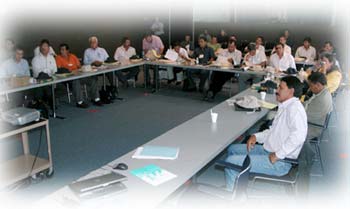 CIMMYT maize breeders Dave Beck and Hugo Cordova organized and led a seed production course on 6-14 September at CIMMYT headquarters in El Batan, Mexico. The course, entitled “Production of High Quality Seed with an Emphasis on Quality Protein Maize,” was funded in part by the Mexican national organization SAGARPA.
CIMMYT maize breeders Dave Beck and Hugo Cordova organized and led a seed production course on 6-14 September at CIMMYT headquarters in El Batan, Mexico. The course, entitled “Production of High Quality Seed with an Emphasis on Quality Protein Maize,” was funded in part by the Mexican national organization SAGARPA.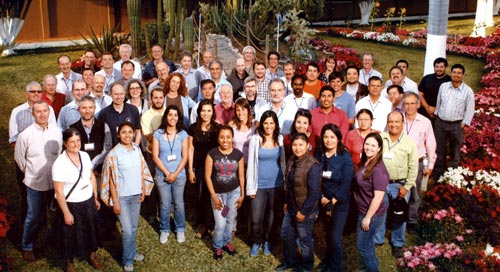
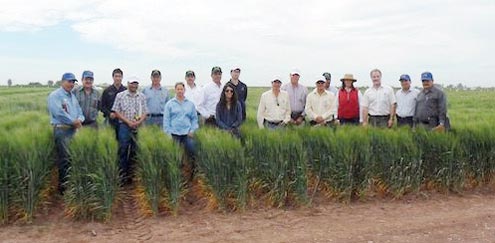
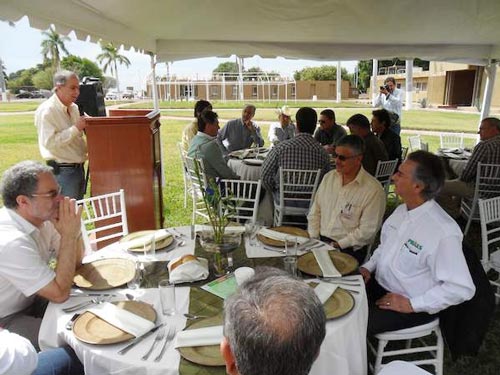 During the visit, Govaerts demonstrated the MasAgro machinery platform, and explained the importance of Mexico being able to manufacture crop machinery and implements that can be used in the different agro-ecological zones of the country. Govaerts stressed that these technology transfer processes must impact farmers, technicians, researchers, and companies which develop this type of machinery in the different regions.
During the visit, Govaerts demonstrated the MasAgro machinery platform, and explained the importance of Mexico being able to manufacture crop machinery and implements that can be used in the different agro-ecological zones of the country. Govaerts stressed that these technology transfer processes must impact farmers, technicians, researchers, and companies which develop this type of machinery in the different regions.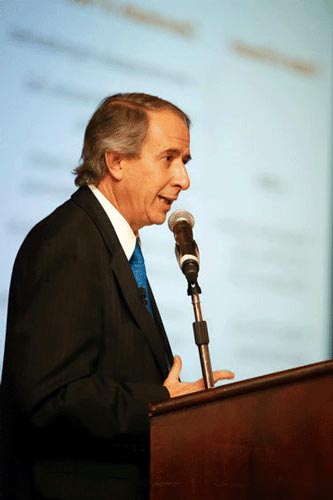 At the
At the
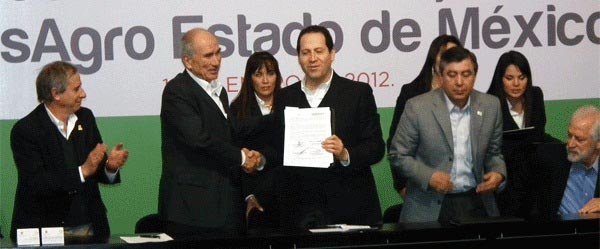
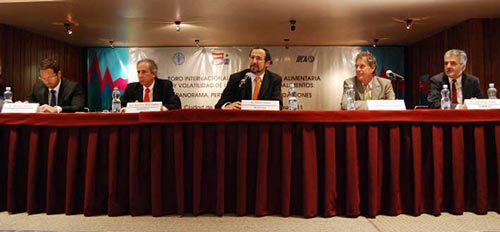
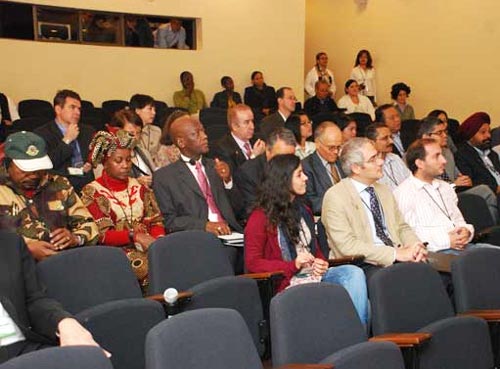 With diplomatic representatives from 15 countries in attendance, the event was designed to raise awareness and foster discussion on partnerships to secure global food security through agricultural research, an issue at the forefront of recent G20 talks in France. Musalem highlighted the Sustainable Modernization of Traditional Agriculture (MasAgro) initiative—implemented by SAGARPA and CIMMYT with myriad national, regional, and local organizations, both public and private—as an innovative model.
With diplomatic representatives from 15 countries in attendance, the event was designed to raise awareness and foster discussion on partnerships to secure global food security through agricultural research, an issue at the forefront of recent G20 talks in France. Musalem highlighted the Sustainable Modernization of Traditional Agriculture (MasAgro) initiative—implemented by SAGARPA and CIMMYT with myriad national, regional, and local organizations, both public and private—as an innovative model.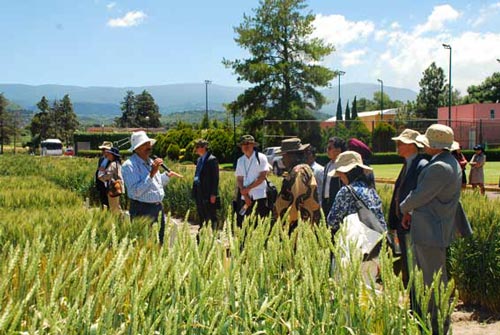 As part of the event, the visitors toured the Wellhausen-Anderson Plant Genetic Resources Center with Thomas Payne and enjoyed a presentation on wheat’s wild relatives by David Bonnet. At the long-term conservation agriculture trial plot, Bram Govaerts described current efforts to test and promote CA practices among thousands of Mexican farmers. The group saw new maize and wheat varieties and learned in more detail about the work CIMMYT and its partners are doing on these crops, in field presentations by Félix San Vicente, Natalia Palacios, José Luis Torres, Marc Rojas, and Ravi Singh.
As part of the event, the visitors toured the Wellhausen-Anderson Plant Genetic Resources Center with Thomas Payne and enjoyed a presentation on wheat’s wild relatives by David Bonnet. At the long-term conservation agriculture trial plot, Bram Govaerts described current efforts to test and promote CA practices among thousands of Mexican farmers. The group saw new maize and wheat varieties and learned in more detail about the work CIMMYT and its partners are doing on these crops, in field presentations by Félix San Vicente, Natalia Palacios, José Luis Torres, Marc Rojas, and Ravi Singh.